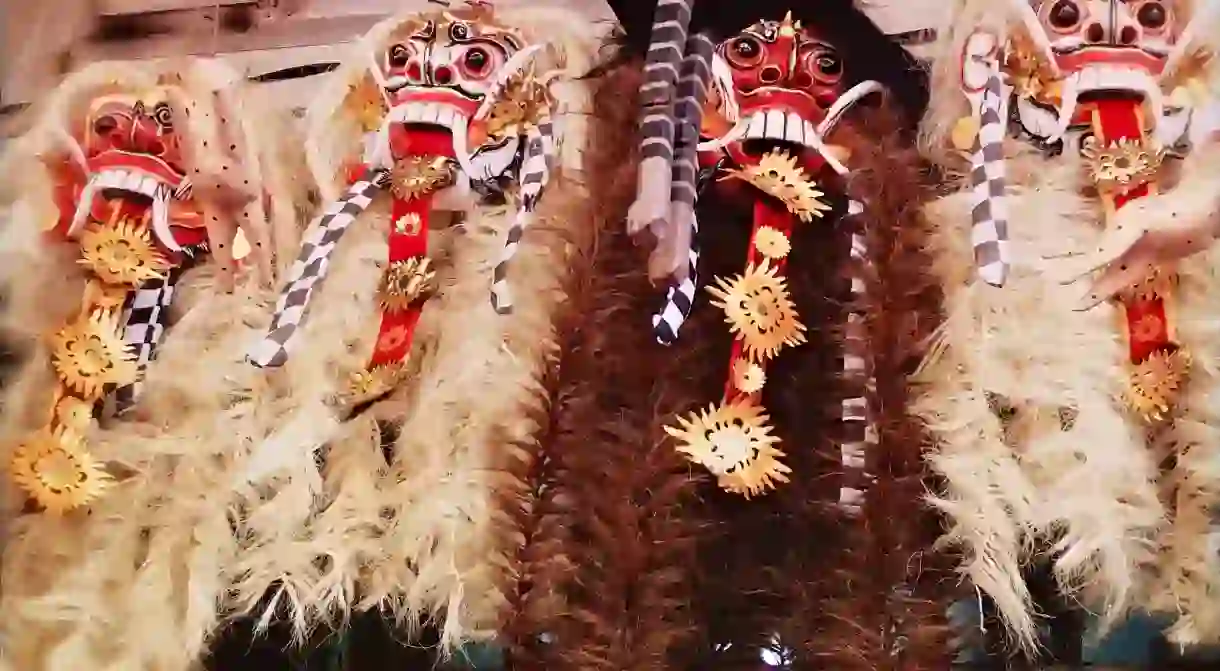The Sacred Meanings of Balinese Masks

While most tourists may first be captivated by their beauty in shops and performances, Balinese masks conceal deep spiritual meanings beneath the aesthetic appeal. From their animism roots to their role in traditional performances, discover the sacred meanings of Balinese masks.
It should be acknowledged that the use of masks for sacred ritualistic purposes isn’t unique to Bali. From the Day of the Dead masks of Mexico to various African tribal masks, different face covers carry different purposes for different culture’s customs and belief systems. And among these cultures, Bali is one of few places where the act and art of masks are not only alive, but thriving.
The prominence of Balinese masks are rooted from the culture’s animism and dynamism past. From the notion that the gods are present in all things, ancient Balinese create beautiful ‘homes’ for the spirit and transcendental energies to dwell in. The mask is, therefore, a medium for ancestral spirits to reside or visit the physical world as it represents the divine beings or energies in a physical form.

Some masks are crafted to house spiritual energy, following specific customs, traditions, and instructions in the making — specific material, time of making, ways of making, and such. These masks will then be used in sacred ceremonies, and even have ceremonies dedicated to their powers.
Balinese masks in traditional performances
When Hindu influences entered Bali, the religion interacted and became dynamically acculturated with the existing ancient belief system. The masks and other cultural objects retain their role and function, while the content of teachings are broadened and developed to accommodate this new religious system. Balinese Hindu created their rendition of Hindu mythologies and teachings through their own dance, music, and objects like masks.
The masks are not alone in serving its spiritual purposes. Put together with music, costume, and dance, this elaborate synergy creates the utmost reverence and offerings when presented to the gods in temples or ceremonies.

Performers are also an important part of sacred traditional performances. Dancers, for example, are seen as the messenger or even representation of the deities. In this belief, the mask plays a role in inviting and hosting the divine energy that will later ‘take over’ or manifest itself in the dancer’s body or its properties. Therefore, performers are always required to go through certain purification rituals before putting on a mask or performing a dance.
Balinese masks today
Sacred masks are used in various processions from massive temple rituals to ceremonies celebrating personal milestones like weddings or funeral rites. But as the uses and functions of dance and performances extend to non-spiritual purposes, the use and meaning of Balinese masks follow. During social or entertainment dances, the masks serve as symbol or impression of certain characters in the story.

Today, tourists know the Balinese masks more as a lovely souvenir to decorate their walls back home. While this is considered highly inappropriate for sacred masks, which have to be stored neatly in cotton bags and treasured inside a temple, some masks are now crafted for decorative purposes, and therefore do not call for the same treatment that sacred masks demand. They will continue, hopefully, to remind us of Bali’s rich past and culture and of their own sacred meanings still held today.













